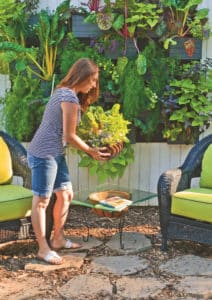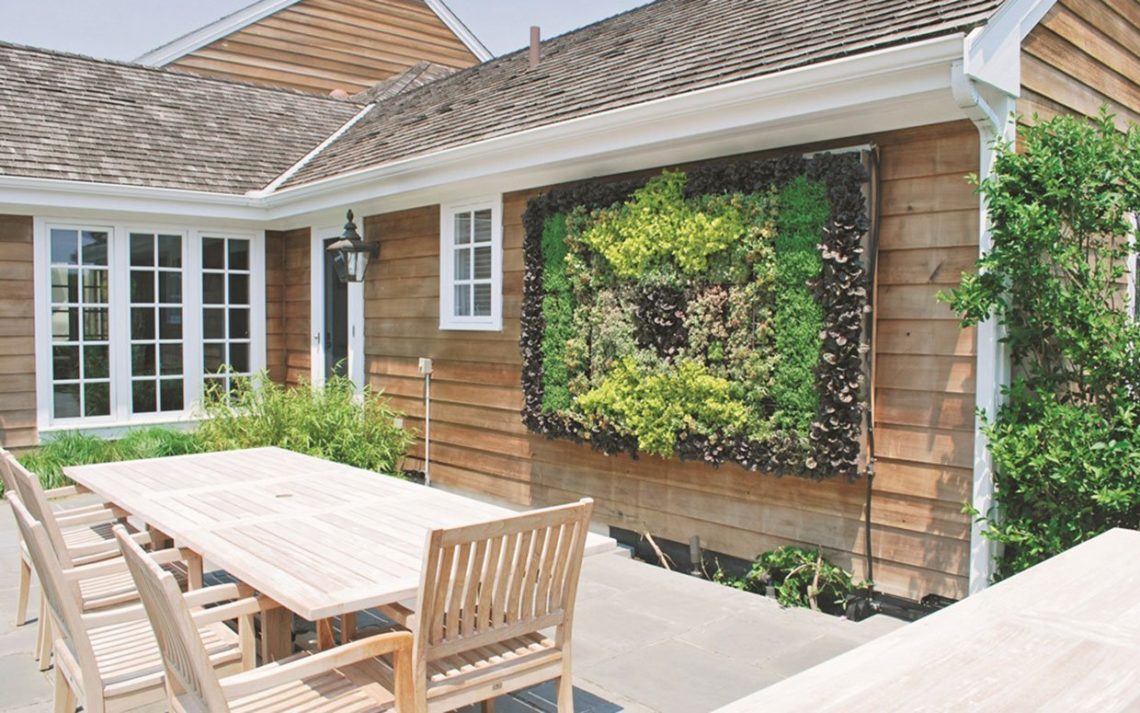If you think you don’t have sufficient garden space or you wish to hide unattractive vertical surfaces in your garden, Shawna Coronado wants to talk to you. The author of Grow a Living Wall has a solution to limited garden space—installing a vertical garden. By growing on elements like walls, fences and gates, you increase your growing space exponentially.

The desire to grow more plants led Coronado to vertical growing. After buying a window box and determining that it gave her added growing space, she did the math regarding stacking five such window boxes on top of one another and ended up with the ability to grow 35-40 plants in those boxes, which is more than many full-sized gardens.
Since that revelation, Coronado has devised a system for planting a wide variety of living walls, including succulents, vegetables, herbs and aromatherapy gardens, all of which and more she shares in her book. “It is very easy to grow herbs, flowers, vegetables and perennials in a vertical system,” she says. “Plants can be grown in shade to full sun.”
(Shawna Coronado)
When Coronado talks about a living wall, she isn’t referring to plants rooted in the ground and growing up a wall. A living wall consists of a self-contained vertical garden with a soil- or water-based medium that is fastened to a vertical surface. Some living wall systems also have the ability to automate watering.
In addition to increasing your growing space, living walls have a wide variety of benefits. They are the antidote to small space gardens, provide those with limited mobility an easier way to garden, and they make otherwise boring vertical spaces green and gorgeous.
“Growing a living wall can also sometimes extend the growing season if a gardener plans well. For instance, putting a wall up in a warm, protected niche might enable seasonal plants a few extra days— or even weeks—of growth,” says Coronado, who hosts the Good Green Home Show, a radio show focused on social good and organic living. “Living walls can also function as an added layer of insulation on a home by reducing the heat effect for a homeowner and simultaneously saving money.”
 Better yet, living walls don’t require weeding. “No weeds means incredible time-saving advantages for an urban family,” says Coronado. “Additionally, if you set up a container garden watering system on your living wall unit, you will not have to water the plants either. No weeds and no watering means a super easy gardening experience.”
Better yet, living walls don’t require weeding. “No weeds means incredible time-saving advantages for an urban family,” says Coronado. “Additionally, if you set up a container garden watering system on your living wall unit, you will not have to water the plants either. No weeds and no watering means a super easy gardening experience.”
To have the best luck with a living garden it’s important to use the best soil mix. “For example, if you have drought conditions, it might be a good idea to plant your living wall garden in moisture retentive soil,” says Coronado. “One of my favorite recipes for a moisture retentive mix is one-third rotted manure, one-third traditional potting soil, and one-third compost. Also make sure to feed your vertical garden with a well-balanced fertilizer every 4-8 weeks.
Julie Bawden-Davis is a garden writer and master gardener, who since 1985 has written for publications such as Organic Gardening, Wildflower, Better Homes and Gardens and The Los Angeles Times. She is the author of seven books, including Reader’s Digest Flower Gardening, Fairy Gardening, The Strawberry Story, and Indoor Gardening the Organic Way, and is the founder of HealthyHouseplants.com.

